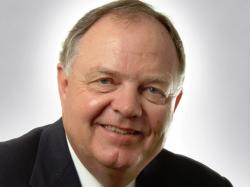Certified Angus Beef – Did You Know.. Is There Any GOOD News?
November 3, 2016 | 4 min to read

It’s hard to imagine that just two years ago the fed cattle market hit $1.60/lb. and weaned calves were bringing $2.50 or higher. Everyone was predicting the cattle business was going to stay profitable for years, especially for the cow-calf sector.
Today’s reality has fed cattle bringing $600 to $800 less than that peak and some calves are selling at half of what they brought just a few years earlier. Throw in demand factors like a two-year weakening of restaurant traffic and anyone could turn pessimistic.
It’s not just cattle, either, as virtually all segments of agriculture are in a weak position. Prices for grains like corn and wheat are often below their cost of production. Even our competing proteins are struggling.
How did all this happen so quickly? Granted, few could foresee the suddenness of these reversals, but Missouri economist Scott Brown explains the underlying answer.
“Producers responded to strong price signals and quickly began keeping more heifers as replacements,” he notes. It takes time for calves from the first wave of expansion to arrive, but when they do we notice, “supply and demand forces do work.”
Did we really think inventory would jump from only 29 million beef cows in 2014 to nearly 31 million cows in just two years? Maybe not, but it looks like it did.
In all this world of negativity there must be a few beacons to suggest this great industry has a bright future. I’ll say there are.
It’s encouraging that forage production in most regions of the country was fairly good, so winter feed supplies should be adequate. The weak grain market finds some relief in the form of lower production costs. Will this offset the staggering price decline? No, but it will help some.
My signals from the retail and restaurant side tell me beef is still the protein of choice, and in certain segments demand is especially strong. One of those is certainly the export market where demand for U.S. product is good even with our strong dollar, as Japan and other countries show excellent demand growth.
Another segment with encouraging strength is premium beef. Certified Angus Beef LLC (CAB) recently reported one of its strongest years with sales up by 119 million pounds to top a billion pounds sold. That’s 13.3% annual growth for a 38-year-old company. Its retail division had been relatively flat despite 10 straight record years for the brand overall. This year, CAB retail’s 18% growth led the way.
CAB President John Stika shared three keys to the landmark year. First is, obviously, supply. There were significantly more fed cattle, but more important for the brand, the CAB acceptance rate hit 28.9% for Angus-type cattle, more than double the 2006 rate. Available product allowed more retail featuring, also driven by the second key factor of lower price. The last key is consumers’ enduring preference for the premium eating experience that high-quality beef provides.
A pointed example is CAB brand Prime growing by 21.5%, especially impressive considering the price of Prime has remained strong. Missouri economist Brown points out the Prime price line remains fairly smooth over time while prices of lower grades jump up and down.
As impressive as the sales growth of premium beef has been, to me the most amazing statistic that I’m sure many of you did not know was its selling price.
For years, the weekly CAB/CHOICE price spread reported by Urner-Barry averaged $6 to $8/cwt. (see table), but the first three quarters of calendar 2016 are averaging $14.02/cwt., a 65% increase over last year.
On a 900-lb. carcass, that’s a $126 advantage over Choice. When you can couple selling way more pounds at a significantly higher margin, that is TRUE DEMAND.
I found it especially interesting that in 2014, when beef prices hit highs that none of us ever expected, we saw the margin for CAB over Choice still a strong $8.61/cwt., well above the nine-year average.
If you look at volume and prices since 2009, Kansas State University’s demand model shows a 98.1% increase in CAB demand while the demand for Choice has been flat for the same period (see graph).
Is this driven mainly by the added value premium steaks can bring? Not really. Weekly monitoring of all cuts shows each premium Choice (CAB) primal brings a premium, and even grinds average a 10- to 14-cent premium over Choice and Select grinds.
How do we explain the strong demand for premium brands such as CAB or quality marks like Prime? Tanya Mark, noted consumer and marketing specialist at the University of Guelph, Ontario, recently published an extensive study on that.
She argues that everyone has key consumer items we like to indulge in or treat ourselves to, but financial constraints generally force us to decide which one to buy. The few exceptions exhibit “cross-category indulgence,” where we pick one item over everything else. She puts premium beef in that category. That, friends, is a huge plus for beef, both short- and long-term.
I’m sure that by now someone is saying, “YA BUT what is in it for the producer? It seems like the packer and retailer make all the money.”
Bi-annually, CAB Director of Industry Information Steve Suther conducts both a packer and feeder calf survey to measure premiums paid back to the producer. His most recent survey, reported earlier this year, showed that in 2015 packers paid a record amount for CAB-accepted cattle, well in excess of $50 million, not including other grid premiums or those paid for high-quality cash cattle. The same upward trend at the auctions shows high-percentage Angus calves bringing a record $30 to $40 more per head than non-Angus across the country.
As Scott Brown understates it, there are a number of ways to practice risk management but producing
Source: Certified Angus Beef LLC
